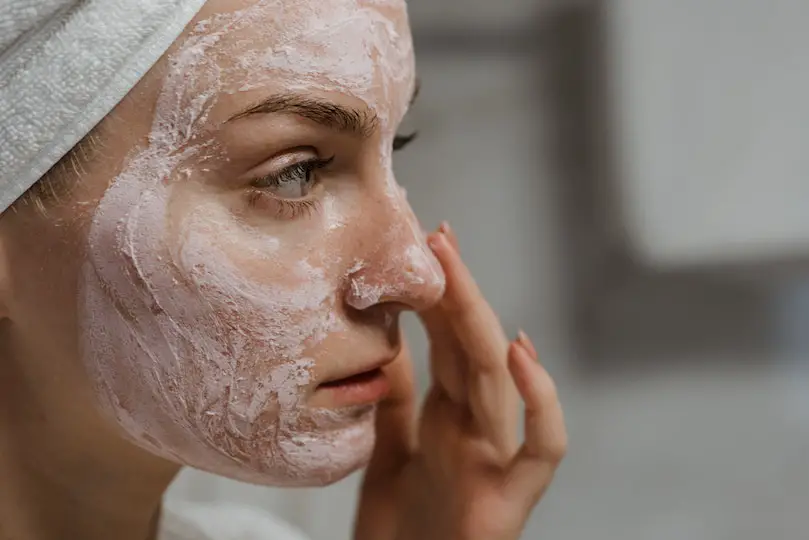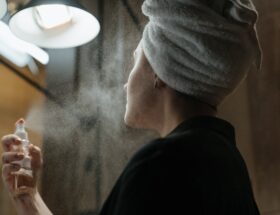This controversial ingredient is in some beauty and skincare products due to its potential skin benefits. It’s not a recent addition to the list of cosmetics ingredients, as it’s been around for years.
However, placenta extracts in cosmetics are becoming a trend with more companies manufacturing an entire line infused with this ingredient. Here’s why.
Claims about Placenta Benefits to the Skin
Placenta-derived skincare products have been marketed with various claims about their potential benefits for the skin. It’s important to note that while some anecdotal evidence and studies exist to support these claims to a certain extent, scientific consensus on the effectiveness of placental ingredients in skincare is limited, and individual results may vary. Here are some claims associated with placenta extracts in cosmetics:
Anti-Aging
Placental extracts are often touted as having anti-aging properties. They are said to promote collagen production, which can help reduce the appearance of fine lines and wrinkles, resulting in smoother and more youthful-looking skin.
Skin Brightening
Placental ingredients may be claimed to improve skin tone and complexion by reducing the appearance of dark spots, blemishes, and pigmentation irregularities. This is often linked to their potential to inhibit melanin production.
Hydration
Some placental-derived products claim to provide deep hydration to the skin. They may help improve moisture retention and reduce dryness, leading to softer and more supple skin.
Firming and Tightening
These ingredients may be marketed as having a firming and tightening effect on the skin. This can result in improved skin elasticity and a more lifted appearance.
Cellular Renewal
Placenta extracts are sometimes said to support skin cell renewal and regeneration, potentially aiding in the healing and repair of damaged skin.
Reducing Inflammation
Some placental cosmetics may claim to have anti-inflammatory properties, which can be beneficial for calming irritated or sensitive skin.
Improving Skin Texture
Users of placental skincare products may report that their skin feels smoother and has a more refined texture after use.
Enhancing Absorption of Other Ingredients
Placental extracts are sometimes included in skincare formulations to enhance the absorption of other active ingredients, allowing them to penetrate deeper into the skin.
How Placenta Cosmetics are Sourced and Manufactured
Placenta-based skincare products are formulated using placental extracts or derivatives as active ingredients. The process of sourcing and manufacturing these creams can vary depending on the cosmetic product and manufacturer. Here’s a general overview of how placenta creams are typically sourced and manufactured:
Placenta Sourcing
Some placenta creams use human placental tissue as their source material. Hence, the process involves obtaining placentas from hospitals or clinics, often from voluntary donors. Donors must provide informed consent, and strict ethical and regulatory guidelines must be followed.
Placental extracts from animals (e.g., sheep or cows) are an alternative to human placental tissue. It’s a less controversial source. However, it may also raise ethical and safety concerns.
Processing and Extraction
The placental tissue is processed to extract the desired bioactive components. The extraction process can involve techniques like homogenization, filtration, and centrifugation. The goal is to isolate the beneficial compounds from the tissue.
Ingredient Isolation
After extraction, the isolated ingredients are in liquid or powder form. These ingredients can include growth factors, peptides, amino acids, and other bioactive compounds believed to have skincare benefits.
Formulation
The isolated placental ingredients are incorporated into a cosmetic formulation, which includes other components like water, emulsifiers, preservatives, fragrances, and moisturizing agents. These formulations can vary depending on the product’s intended use (e.g., creams, serums, or masks).
Quality Control and Safety Testing
Manufacturers are responsible for conducting rigorous quality control and safety testing to ensure that the placenta cream meets regulatory requirements and is safe for use. This testing may include stability testing, microbiological testing, and safety assessments.
The Dangers of Placenta Use in Cosmetics
The use of placenta-derived ingredients in cosmetics has gained popularity in recent years due to claims of potential benefits for the skin, such as improved hydration, anti-aging effects, and enhanced collagen production.
However, placenta extracts in cosmetics have several significant dangers. It’s important to note that the following concerns apply primarily to cosmetics containing human placental tissue or derivatives, as opposed to plant-based ingredients that may be named after the placenta but do not contain actual placental tissue.
Disease Transmission
The placenta is a bodily organ for transferring nutrients and oxygen from the mother to the fetus during pregnancy. It can also contain viruses, bacteria, and other pathogens if not properly processed and sterilized during the extraction and manufacturing of extracts.
Ethical Concerns
The use of human placental tissue in cosmetics raises significant ethical concerns. It may involve the collection of placentas from birthing mothers without their informed consent in regions without firm legal frameworks.
Allergic Reactions
Placenta-derived ingredients may cause allergic reactions in some individuals. These allergic reactions can range from mild skin irritation and redness to more severe symptoms, such as hives and swelling.
Although we’re discussing human placental extracts, the risk of allergies is higher when using ingredients derived from animal sources. These may contain proteins that can trigger immune responses in some people.
Lack of Scientific Evidence
Many claims regarding the benefits of placental ingredients in cosmetics lack substantial scientific evidence. While some studies have suggested potential benefits, the research is often limited in scope and may not be conclusive.
Regulatory Issues
Different countries have varying regulations regarding the use of placental tissue in cosmetics. Some countries may require rigorous testing and safety assessments, while others have fewer restrictions. This lack of uniform regulation can make it challenging to ensure the safety and efficacy of placenta-based cosmetics.
Unsanitary Processing
The processing of placental tissue can be complex and potentially unsanitary. Hence, contaminants from improper handling and processing can introduce health risks for consumers.
Environmental Concerns
Extracting placental tissue may also raise environmental concerns, as it involves the disposal of human biological waste.
Takeaway on Placenta Use in Cosmetics
While some cosmetics may tout the benefits of placental ingredients, consumers should exercise caution and consider the potential dangers and ethical concerns associated with their use.










